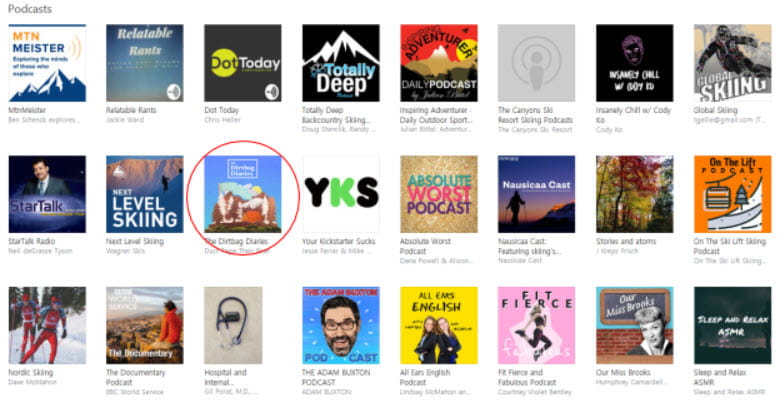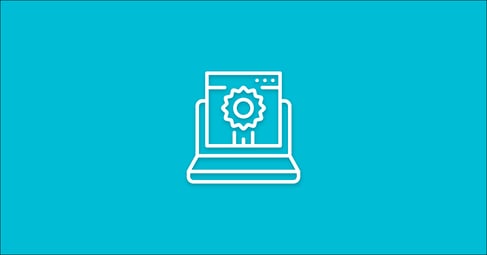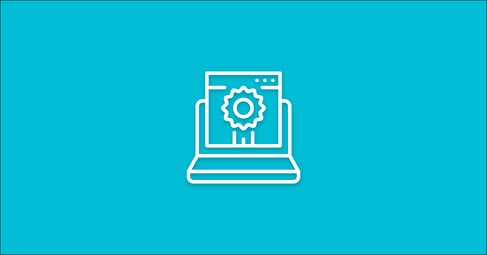Written By:
Ryan Sylvestre
If you’re anything like me, starting a podcast can be a daunting task. When my boss Sean asked me to create one about marketing trends, I had no idea where to start. I’ve never had experience with podcasting, radio, or audio editing. This is a story about my journey to becoming a successful podcast creator and producer.
It took me a long time to write this blog post because I learned new tips and tricks every week we record our podcast. I wanted to make sure I was sharing key things I have learned along the way to help make starting up a podcast a little easier for everyone.
Stay Up To Date On All Things Sales, Marketing, & Tech

Before we dive in, I want you to keep these 6 main ideas in mind because they are the building blocks for everything we will be talking about.
How To Get a Podcast Started
- Understand podcast equipment
- Pick out your technology/editing software
- Create appealing podcast artwork
- Creating a show outline
- Getting your show on iTunes
- Be consistent
Podcasting is a great way to deliver content to your audience while they are on the go, at the gym, or driving to work. Don’t be afraid of the upfront work podcasting takes, as this is totally doable for any skill level and can have tons of business benefits.
1. Podcast Equipment
In this section, I want to emphasize that if you really think that you will keep up with the podcast life, make the investment. When I first started our podcast, I had a $30 microphone and it caused more problems than solutions.
It was such a bad microphone that just having it plugged into the same audio mixer would cause unbearable interference. Once we upgraded to better mics everything went away. Take the time to research professional microphones, audio mixers, and software and make the investment to do it right the first time.
Microphone
Here at the office, we have a Dynamic Cardioid Studio Microphone, whatever that means. Yeah, it’s pricey, but we have literally had people say that when they play our podcast in the car it sounds like we are sitting next to them while they are driving. It’s that good.
I have also noticed that the other popular podcasts use this microphone, which is still right around the same price. I can attest that both of these mics are great and I’m sure that there are others out there. Long story short, if you want to sound good, buy a good microphone.
Having a professional microphone can save you from feedback problems, annoying buzzing sounds, and headaches in the editing process.
Audio Interface
We use a Focusrite Scarlett 18i8 for our audio interface. If you don’t know what an audio interface does, allow me to explain.
An audio interface allows you to control, adjust, and record all of your audio into your audio editing software. If you only plan on having yourself and one other guest on the podcast, then you can get this version of the Focusrite, which will save you some cash. Depending on how many people you plan to have in each episode, you may want to think about getting an interface with more inputs. We started with one that only had 2 inputs and quickly realized that we will need more for guests and interviews.
The main reason to use this type of mixer is that it keeps all of your audio files organized and you can adjust each individual mic according to each podcasters voice.
2. Technology
The technology you use can make all the difference when it comes to sound quality. This is also where a lot of people get hung up. A lot of the software out there can be complex and confusing.
My preferred audio editing software would have to be Adobe Audition. Once I got over the learning curve, the benefits are huge. I highly encourage you to check out their free demo.
There are also free options out there like Audacity and OcenAudio. One thing I like about Adobe Audition is that is has a ton of preset effects to make your audio tracks sound professional without having to tediously set it up yourself.
Audio Editing Software
Like I said before, Audition is what a lot of professional podcasters and musicians use as their editing software. Getting it set up can be hard though.
If you are using any Focusrite equipment, you may want to check out their downloadable software drivers. These are especially helpful when you want to use more than one mic. These drivers will allow you to open up your equipment to use more than one mic at a time.
If you are having trouble getting your mic to open up into multiple channels. Using a professional editing software can help you improve your audio quality. Having clean audio is really important; because so many people listen to podcasts now, they have come to expect super clean audio.
3. Podcast Artwork
So, at this point, you have all of the technology needed and you can start to dig into the fun stuff. Now, get to create some kick-ass artwork.
You are going to be competing with a plethora of other podcast channels. The only way to stand out from the crowd is to appeal to their type of style.
One of the things I did when I started creating podcast artwork was doing a search in iTunes for the category I was planning on targeting and I looked around at the other types of designs so I could tailor mine to stand out from the crowd.
For example, I am a big fan of skiing. If I do a search for skiing podcasts on iTunes, I’ll be met with a dashboard that looks like this:

We can see that there is a lot of different styles but as soon as I loaded the page I could identify which one I liked the most. Now, you’re not going to get everyone to click on your podcast because everyone doesn’t enjoy the same imagery. But we can make some good assumptions from what we see here on the page.
Most ski-related artwork includes:
- A mountain scene
- Trees
- Outdoors
- Cartoon-like
- Bright colors
It may not seem like much but this can make a big difference. Use this as a starting point and expand as you start to pull together some ideas.
4. Show Outline
Each time we sit down to start a new podcast episode, Sean, Tim, and I pull up our show notes and quickly review what we are going to be discussing. It seems like such a small thing but it really controls our tempo, discussion, and focus.
For us, we can clearly separate topics because marketing usually falls into a set of identifiable buckets. As we go through the show we can easily tell if we are moving too fast or slow.
Creating Segments
At a very high level, you can separate any show into different categories. Here is a basic example:
- Opening
- Intro music
- Show Introduction
- Guest Introduction
- Lead Into Main Topic
- Introduce the Idea
- Break down certain sections
- Talk through key ideas/takeaways
- Go in-depth about an important section
- Recap
- Restate main ideas
- Leave the listener with something to think about
- Closing
- Show closing sign off (“See ya next week”)
- Outro music
Listen to any popular podcast, you will likely know exactly when a certain section of their podcast is coming up. You shouldn’t have to say “okay, now we’re going to get into our main topic idea”. They likely say something like “let’s get into it”, “let’s dive in”. This kind of language cues up the sections to re-engage the listener. I listen to a lot of podcasts that can sometimes go over an hour and I usually turn into a podcast zombie after about 30 minutes. Most podcasters will re-engage their audience with certain cues to regain some of that lost attention.
When we first started recording our podcast, we had trouble keeping everything organized and would cut people off when they still had more to say on a topic. Having these key phrases in place to signify a segment can help you and whoever else you are podcasting with keep their thoughts organized. You will know exactly what is coming up so you can mentally prepare to segway into the next topic idea.
Pro Tip: Keep this as consistent as possible. As you start to gain listeners and subscribers, they will become accustomed to these cues and will be expecting them. So put a lot of thought into how you want to structure your show and try not to change it.
Know What You’re Going To Say
This is very, very important. When we first started, we all would bring one or two articles to the table to read on the podcast. No one else read them, and you were basically in charge of leading that section.
Sometimes I would bring an article to the table and it would be a complete dud. Sean might say “Huh, that’s cool” or Tim might say “Oh, I never realized that”. Not great for your audience to listen to your ideas crash and burn.
Now, we use a Slack channel to organize our thoughts. We set expectations for this channel by saying that any article that goes in it, we are all expected to read and bring our own thoughts and commentary to the table. We usually have a 10-minute discussion before each episode so we can set up each topic and make sure we mark down key ideas that we want to mention.
Do all of your thinking before getting in front of the mic. You don’t want to have a bunch of blank sections on your podcast recording. Never have more than two seconds of white noise. You will be surprised at how this small amount of time affects the overall flow of your podcast. Two seconds may not seem like that much time, but to the listener it makes it seem like you don’t know what to say next.
Intro & Outro Music
Please, lord, pick some good music. Generally speaking, you want your music to be upbeat and uplifting. Make sure you pick some music you really like because you are going to be using it for a long time. This again, ties into the fact that everything needs to stay consistent. When you really start to get an audience, things like format and music choice become key.
There are a ton of “free music libraries” out there but most of them are junk. I don’t know why it took me so long to find, but YouTube has a really awesome music library. Pick something that matches the overall mood and vibe of your company or industry.
Once you have that picked out, you’re going to want to record your intro, which I get more into the how later on. Your intro is the first thing any new listener is going to hear and you want to get them hooked. Have it say something like:
“Welcome to the [Show Name] podcast where we talk about [all of the fun and interesting things related to {your topic} ]”
This will let the listener know right away if your show is going to discuss things they are interested in.
Getting On iTunes & Spotify
Believe it or not, getting on iTunes is easier than you think. They have a pretty easy to follow checklist of how to do so. You will have to do a few things.
First, you will have to pick a hosting company:
- Soundcloud
- Podbean
- BuzzSprout
- Libsyn
iTunes requires something called an RSS (Really Simple Syndication) in order for your podcast to be on their site. An RSS feed is basically a way for your podcast hosting company to communicate with iTunes or Spotify to tell if when new content is published.
Pro Tip: Some hosting may not default to include each episode in your RSS feed so make sure you allow each episode to be included and to allow downloads. These permissions vary from each hosting company.
Second, you will have to record an episode. In order for your RSS feed to be active, it has to include a recording of some kind. iTunes has to manually approve your podcast. This means that a real person is listening to your episode in order to give you the final okay. Yes, really. This can sometimes take a of couple weeks. In my experience, it took about 6 days.
Once they approve, all you’ll have to do is keep up the consistency.
Get Discovered
If I am being perfectly honest, it takes a long time to get noticed on iTunes or Spotify because there is just so much competition out there. There is also a lot of noise because there is a podcast for absolutely everything. I just did a quick search for knitting and there were about 10 different podcasts about knitting. KNITTING!
The best thing to do is to get a bunch of up-front momentum. iTunes has a “New and Noteworthy” section where popular podcasts get placed, almost like a featured snippet in a Google Search results page. Just like Google, iTunes has its own algorithms and it has been rumored that if you want to be placed in the “New and Noteworthy” section, you have 8 weeks to do so. After that, new podcasts are ineligible to get that slot.
The other thing we didn’t do so much at the beginning, that we do now, is turning each episode into a blog post. We call these the show notes. Whenever we reference an article in the podcast we always say “we will include it in the show notes so you can go back to it”. This gave us a chance to capture our blog audience as well as new podcast listeners. We leveraged our website authority and rankings to hopefully get a few more subscribers to our iTunes page. Finding your podcast can be difficult for some searchers so adding as much detail to your RSS feed and show notes will help them cut through the noise.
Here Are a Few Things To Leave With
If you want to get discovered, make sure you have an angle; something people actually want to listen to. Get the right equipment for the job. Like I said before, there is a lot of competition and almost everyone out there has a profession equipment set-up and you should too. Keep everything consistent, from your show notes to the number of times you post new episodes.
Make sure you show up to record your first episode with a plan in mind. Once you run through it a couple of times, listen and reevaluate the way you sound and the structure of your show.







